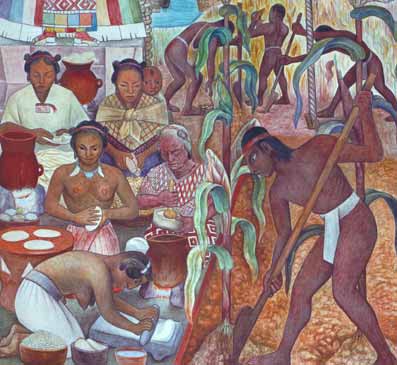By: Thomas Siebertz
As Felicia referenced in yesterday’s post, science met food last week when the first hamburger grown from cow muscle tissue was prepared and eaten at a live event in London after years of research and over $300,000 in funding. The burger was tasted by a panel of three volunteers consisting of Mark Post, the creator of the cultured beef, food writer Josh Schonwald, and nutrition researcher Hanni Rutzler. Since then, the internet has been buzzing with commentary surrounding the controversial product. But whether optimistic or opposed to the lab grown patty, no one can deny the incredible progress we are making in the field of food science and technology.
It has become clear that our food system is not going to be able to support our growing consumption as we move into the future. We’re having trouble feeding everyone as it is with food prices continuously on the rise. Among other issues that need attention are environmental impact and animal welfare. Could growing meat be the answer or do we simply need to consume less meat altogether?
Jasmijn de Boo, CEO of the Vegan Society, believes that lab grown meat is not the solution because it will be expensive for quite some time, faces widespread public resistance, and ignores an existing solution. She also states that the public could eventually foot the bill for the research and it would lead to societal inequalities down the road.
On the other side of the debate, Isha Datar of New Harvest writes, “the in-vitro hamburger is the product of human ingenuity and is considerate of humans, animals and the planet”. She writes, “we can establish a safer food supply by avoiding conditions that promote the spread of disease and can take a major step toward improving the impact on our environment”. She likens the process of growing cultured beef to the fermentation of beer, which uses living cells in a controlled environment.
To get a better idea of the meat growing process, see this quick video, which explains how they do it. It begins with harvesting muscle tissue from a cow, and then separating the individual cells from the tissue. By dissecting the muscle cells, individual cells can be removed and cultured. From one muscle cell, more than one trillion cells can be grown and eventually grown back into muscle tissue.
The important thing at this stage in development is that the current burger is proof of concept. Mark Post showed it could actually be done. But how did it taste? The other two members of the panel described it as having a similar texture to a conventional burger but lacked the flavor and mouth feel that fat would normally impart.
This was to be expected though, since there was no fat put in to the burger. While they reiterated several times that it needed more fat and flavoring, a sensory scientist or a meat scientist would have given a more accurate description of what it was like. Post said in the video of the event that they plan to add fat in the future, but a burger with no fat would probably be a dream come true for some!
Post also alluded to an interesting notion that this technology could some day be available for personal use in the home, the way people grow their own vegetables today. I think a lot of people would be willing to try this if it was a cheaper alternative to conventional beef. It also takes the process out of the lab/factory and gives the consumer more control.
Though we are probably years away from it being commonplace, I imagine it might be something like this home aquaponics system. I think moving into the future, the best and most cost effective alternative will be for people to grow their own food, like we once did.
What do you think about the Post Patty? Is it something you would try or even purchase down the road when it becomes cheaper? Tell us your thoughts in the comments section!
Photo Credit: http://www.thenews.com.pk/article-112521-Scientists-cook-worlds-first-lab-grown-beef-burger






As a food technologist, I am curious to try it myself but not for a long term consumption even if it got cheaper. Perhaps, this is a sustainable method to add on to our meat supply. Interesting comparison of having a sustainable meat production method and Veganism. To me, it doesn’t hide the facts that we are trying to cut down meat consumption and moving towards eating locally grown veggies and fruits. Veggies and fruits are a great source of nutrients for us and reducing the meat portion would be beneficial towards our health and the environment too.
By engaging into the dependency to produce meat in the lab, are we trying to tell the world that we are dependent on technologies and lab to make things happen? How about preserving our farm land and our farming practices?
You’re right Felicia, we would all be better off with a plant based diet. Unfortunately not enough people are willing to cut meat from their diet since we are so accustomed to eating it. It’s too bad because when you look at a country like Japan that eats a lot fish and plant food, they have the longest life expectancy in the world, while the US ranks in at 33.
I don’t think it’s necessarily a bad thing we are turning towards alternate sources, but the price on this cultured beef isn’t going to be cheap enough for people to actually buy for many years. I’ve already stopped buying beef just because it’s way too expensive and I can get more fish/chicken/pork for less money. Even Lobster is only #3.99/lb now! I can imagine in the future if things keep going this way beef will only be available to the super wealthy.